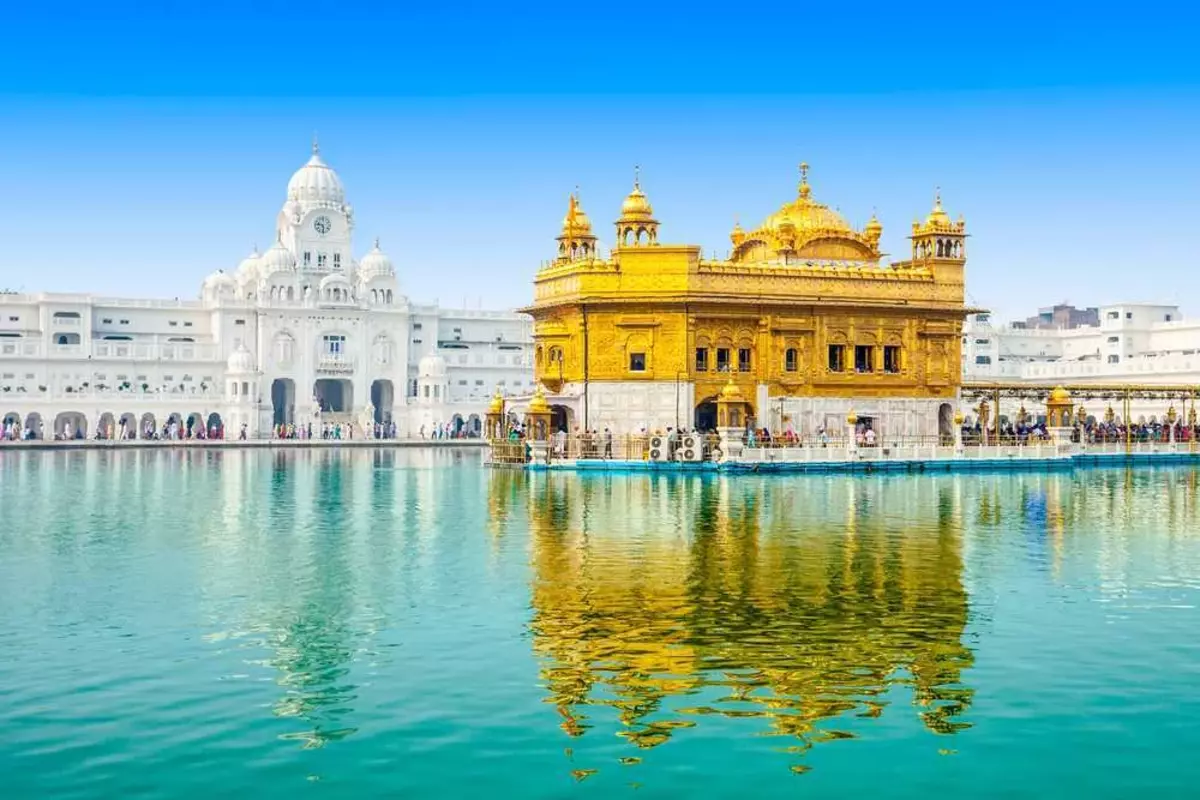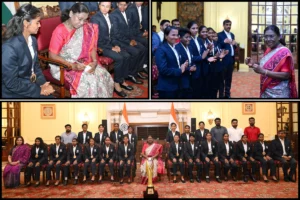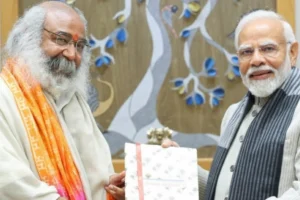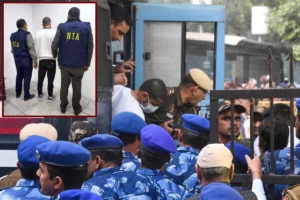
If you have ever traveled to Amritsar and the Golden Temple, also known as Akal Takht, you may have come across a dual-edged weapon.
The attention is drawn to this long and wide double-edged sword since the hero in the English film “Braveheart” and a similar “Khanda” are depicted in the advertising. Baba Deep Singh ji’s double-edged sword has been kept safe for many years. He was a three-hundred-year-old warrior saint. I’m not sure if his narrative is included in Punjabi history books or not; it’s not mentioned anywhere else.
In 1682, Deep Singh—the son of Bhagat and Gioni—was born in the Amritsar area. On the occasion of Vaisakhi in 1699, Guru Gobind Singh Ji initiated him into the Khalsa. He adopted the Khande Di, or Amrit Sanchar, method. He spent his teenage years with Guru Gobind Singh, studied Gurmukhi with Bhai Mani Singh, and picked up gun handling skills. He returned to the village and stayed there from 1702 until 1705. Subsequently, he came back at the behest of the Guru and proceeded to duplicate the Guru Granth Sahib.
In 1709, Baba Deep Singh fought alongside Banda Bahadur in the Sandhaura and Chappar Chiri fights. Nawab Kapoor Singh had proclaimed him the group’s head by 1748. Next year, when there was a Sharbat Khalsa (a meeting) of 65 groups in Amritsar, the groups were divided into twelve misals. He was given the command of Shaheed Misal. This was the period when Islamic invaders would come to plunder and enslave many people. Sikh fighters often saved women and children from being forcibly converted into sex slaves and Muslims.
Similarly, Baba Deep Singh, who was near Kurukshetra, received word in April 1757 that Ahmed Shah Durrani’s army was launching its fourth offensive on Northern India. The Sikhs ambushed the retreating forces and freed several prisoners and valuables on their route back to Kabul. Upon arriving in Lahore, a furious Durrani gave the order to destroy Harmandir Sahib. Along with commander Jahan Khan and over ten thousand warriors, his son Taimur Shah assumed charge of Punjab.
The bones of butchered cows were found in the holy pond after Islamic militants took control of Harmandir Sahib. Baba Deep Singh had been spending more time chanting and in meditation by that point. When this news reached 75-year-old Baba Deep Singh, he got up from his retirement and once again stood up to get Harmandir Saheb built. Five hundred Sikhs from nearby areas joined them. By the time they passed through the villages and reached Tarn Taran Sahib, the Sikhs kept joining them. In front of about ten thousand Islamic soldiers, on November 11, 1757, only half of them were Sikhs.
Baba Deep Singh’s head was nearly severed by an enemy attack during the conflict. It is reported that a Sikh remarked, “You had said that you would stop after reaching the pond of Harmandir,” upon witnessing him fall. Once more, Baba Deep Singh advanced with his head in his left hand and roughly fifteen kilograms of Khanda in his right. The Islamic militants were driven out, allowing Harmandir Sahib to be freed. Inside the Golden Temple, there is still a marker at the location where Baba Deep Singh eventually stopped. He has also kept his double-edged Khanda.
If you go by, you’ll see that being 75 years old doesn’t stop someone from accomplishing their goals. It will inevitably occur. but Baba Deep Singh has already taught us how deeds do not let us pass even in three hundred years.
To read more such news, download Bharat Express news apps





















